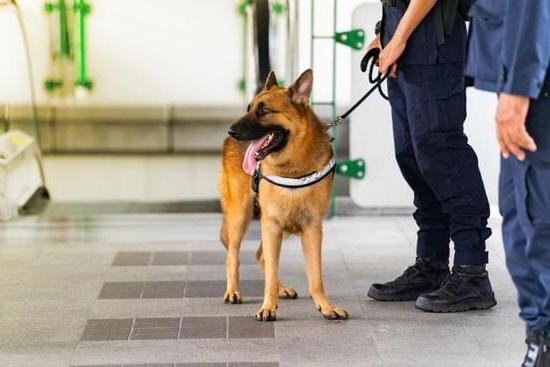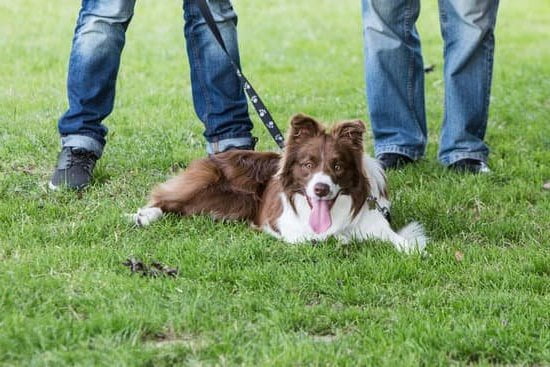Crate training is an essential aspect of raising a well-behaved and happy dog. When done correctly, it provides a safe and secure space for your furry friend while also aiding in house training and behavior management. In this article, we will explore the ins and outs of crate training, from selecting the right crate to addressing common challenges and celebrating the success of this valuable training tool.
Selecting the appropriate crate for your dog is crucial to the success of crate training. Factors such as size, material, and style all play a significant role in creating a comfortable and inviting space for your pet. We will delve into these considerations to help you make an informed decision when choosing a crate that best suits your dog’s needs.
Setting up the crate in the right location, with proper bedding and accessories, contributes to creating a positive environment that your dog will enjoy spending time in. Additionally, introducing your dog to the crate gradually and building positive associations are key steps in ensuring that your pet feels at ease inside their new haven. Through mealtime and rewards, we’ll show you how to make the crate an inviting place for your furry companion.
Selecting the Right Crate for Your Dog
When crate training your dog, it is crucial to select the right crate that will provide a safe and comfortable environment for your furry friend. The size of the crate is one of the most important considerations. Your dog should have enough room to stand up, turn around, and stretch out comfortably. If the crate is too big, your dog might use one side as a bathroom area, defeating the purpose of crate training.
Material and style are also important factors to consider when selecting a crate for your dog. Wire crates are popular because they are sturdy, allow for good ventilation, and can be easily collapsed for storage or transport.
Plastic crates, on the other hand, provide a more den-like environment that some dogs find comforting. Soft-sided crates are lightweight and portable, but they may not be suitable for all dogs as they are not as durable as wire or plastic crates.
When choosing a crate for your dog, it’s essential to take into account their individual needs and preferences. Some dogs may feel more secure in an enclosed plastic crate while others may prefer the openness of a wire crate. It’s important to observe your dog’s behavior and tendencies to determine which type of crate would be most suitable for them.
| Crucial Crate Considerations | Description |
|---|---|
| Size | The size of the crate should allow the dog to stand up, turn around, and stretch out comfortably. |
| Material | Wire crates offer good ventilation and collapsible design; plastic crates provide a den-like environment; soft-sided crates are lightweight and portable. |
| Individual Needs | Different dogs have different preferences for their crate style; observation of their behavior is key in determining suitability. |
Setting Up the Crate
Once you have selected the right crate for your dog, it’s important to set it up in a way that is comfortable and inviting for your pet. Here are some considerations for setting up the crate:
- Location: Choose a quiet and peaceful area in your home for the crate. Avoid placing it in high-traffic areas or near loud household appliances. This will help your dog feel safe and secure while inside the crate.
- Bedding: Line the bottom of the crate with soft bedding or blankets to make it cozy for your dog. However, be mindful of any chewing tendencies your dog may have and avoid using materials that could be harmful if ingested.
- Accessories: Consider adding some comforting accessories to the crate, such as a favorite toy or an article of clothing with your scent on it. These items can help provide additional comfort to your dog while they are inside the crate.
By carefully choosing the location, bedding, and accessories for the crate, you can create a positive environment that encourages your dog to view their crate as a safe and comfortable space.
Remember to always supervise your dog initially while they are in their crate to ensure they are adjusting well to their new surroundings. With patience and consistency, your dog will soon come to see their crate as a secure den where they can relax and feel at ease.
Introducing Your Dog to the Crate
Gradual Introduction
Start by leaving the crate door open and allowing your dog to explore it at their own pace. You can place some treats or toys inside the crate to encourage them to go in. Avoid forcing your dog into the crate as this can create negative associations with it. Gradually, start closing the door for short periods while you are still in the room, then increase the duration as your dog becomes more comfortable.
Positive Reinforcement
Each time your dog willingly goes into the crate, praise and reward them with treats or verbal praise. This will help them associate going into the crate with positive experiences. You can also consider feeding your dog their meals inside the crate to further build a positive association.
Patience and Consistency
It’s important to be patient during this process as every dog adjusts to crate training at their own pace. Consistency is key, so make sure that everyone in the household is on board with using positive reinforcement techniques when introducing your dog to the crate. With time and patience, your dog will come to see their crate as a safe and comfortable den.
Feeding and Rewarding Your Dog in the Crate
When it comes to crate training your dog, mealtimes can be an essential tool for creating a positive association with the crate. By using food as a motivator, you can help your dog see the crate as a safe and enjoyable space. Here are some tips for making mealtime a positive experience for your dog in the crate:
- Gradual Introductions: Start by placing your dog’s food bowl near the crate to get them comfortable with being near it. Gradually move the bowl closer to the inside of the crate over several days until your dog is comfortable eating from inside the crate.
- Use Treats and Rewards: When introducing your dog to the crate, use treats and rewards to encourage them to enter and stay inside. You can also place treats or puzzle toys inside the crate during mealtime to keep them occupied and happy.
- Mealtime Routine: Establish a consistent mealtime routine for your dog in the crate. This will help them associate positive experiences with being in the crate while also promoting good behavior during feeding time.
By using these strategies, you can help your dog build a positive association with their crate, making it a place they view as their own safe haven rather than a source of stress or confinement. It may take time and patience, but with proper training, most dogs grow to love their crates as their personal den.
Crate Training Schedule and Routine
Crate training your dog requires establishing a consistent daily routine to help them understand the expectations and structure of their new living situation. Dogs thrive on routine and it provides them with a sense of security and stability. When creating a crate training schedule, it’s important to keep in mind the specific needs of your dog, as well as your own lifestyle.
One of the key components of a successful crate training schedule is regular potty breaks. Puppies, in particular, have small bladders and need to relieve themselves often. As a general rule, a puppy can hold its bladder one hour for every month of age. This means that if you have a two-month-old puppy, they should be taken out to potty every two hours during the day.
In addition to potty breaks, your crate training schedule should also include playtime, exercise, feeding times, and quiet time for rest. Providing your dog with mental stimulation through interactive toys or training sessions is also beneficial and can prevent boredom or anxiety while in the crate.
| Aspect | Consideration |
|---|---|
| Potty Breaks | One hour for every month of age |
| Playtime/Exercise | Varying by breed and age |
| Mental Stimulation | Interactive toys or training sessions |
Addressing Common Crate Training Challenges
Understanding Separation Anxiety
Separation anxiety is a common challenge when crate training a dog. This behavior can manifest as excessive whining, barking, or destructive behavior when your dog is left alone in the crate. Understanding the root cause of separation anxiety, such as a lack of confidence or previous negative experiences, is crucial in addressing this issue.
Techniques for Alleviating Separation Anxiety
There are several techniques you can use to help alleviate separation anxiety in your dog during crate training. Gradually increasing the amount of time your dog spends in the crate, using positive reinforcement and rewards, and creating a relaxing environment inside the crate can all help reduce anxiety. Additionally, providing your dog with plenty of exercise and mental stimulation outside of crate time can also help alleviate symptoms of separation anxiety.
Dealing With Whining and Accidents
Whining and accidents inside the crate are also common challenges during the training process. It’s important not to scold or punish your dog for these behaviors as it can create a negative association with the crate. Instead, focus on reinforcing positive behaviors and providing frequent potty breaks to avoid accidents. Consistency and patience are key in addressing whining and accidents during crate training.
Gradual Transition to Unsupervised Crate Time
Leaving your dog alone in a crate can be a daunting task, especially if your pet is not used to being confined. However, with the right approach, you can gradually transition your dog to unsupervised crate time. This will not only ensure their safety and prevent destructive behavior but also provide them with a sense of security and comfort when left alone.
To begin the gradual transition, start by leaving your dog in the crate for short periods while you are still at home. This will help them get used to the idea of being confined without feeling abandoned.
Use this time to observe your dog’s behavior – if they seem relaxed and calm, gradually increase the duration of time spent in the crate. It’s important to make these initial sessions as positive as possible by providing treats and toys to keep your dog occupied.
Once your dog has become accustomed to short periods of alone time in the crate, you can start leaving them alone for longer intervals. Before leaving them unsupervised for an extended period, ensure that they have had plenty of exercise and mental stimulation to reduce anxiety and restlessness.
Additionally, refrain from making a big fuss when leaving or returning home as this can create unnecessary excitement or anxiety for your pet. With patience and consistency, your dog will learn that the crate is a safe and comfortable space even when left alone.
Conclusion
In conclusion, crate training can greatly benefit both you and your dog. By providing a safe and comfortable space for your pet, you are helping them feel secure and reducing the likelihood of destructive behavior or anxiety-related issues. Additionally, crate training can make travel and vet visits less stressful for your furry friend, as they will have a familiar and reassuring space to retreat to.
It’s important to remember that crate training takes time, patience, and consistency. Do not rush the process or force your dog into the crate. Building positive associations with the crate and using treats as rewards can help create a pleasant experience for your pet. With a consistent routine and gradual transitions, most dogs can learn to enjoy their crates as a comforting den-like space.
Ultimately, the goal of crate training is not just confinement; it’s about providing your dog with a sense of security and independence while also promoting positive behaviors. By celebrating the small successes along the way and being patient with any setbacks, you can enjoy the improved behavior and peace of mind that comes with a well-trained, crate-friendly canine companion.
Frequently Asked Questions
How Long Does It Take to Crate Train a Dog?
The time it takes to crate train a dog can vary depending on the individual dog, their age, and previous experiences with crates. Some dogs may take to crate training quickly within a few days, while others may require several weeks of consistent training.
It’s important to be patient, use positive reinforcement, and gradually increase the time spent in the crate to help your dog become comfortable with it.
How Do I Get My Puppy to Stop Whining in His Crate?
To get your puppy to stop whining in his crate, it’s essential to first ensure that his physical needs are met – he should have recently been fed, taken outside for a bathroom break, and had some playtime or exercise. If he continues to whine after these needs are met, it’s important not to reward the whining behavior with attention or by letting him out of the crate immediately.
Instead, wait for a moment of quiet before opening the crate door and offer praise when he is calm.
Is Crate Training Stressful for Dogs?
Crate training can be stressful for some dogs if not done properly. It is crucial to introduce the crate positively and gradually acclimate them to spending time inside it. Forcing a dog into a crate or using it as punishment can cause stress and anxiety.
However, when done correctly with positive reinforcement, many dogs come to see their crate as a safe and comfortable den-like space. It’s essential for pet owners to understand their individual dog’s needs and feelings about crate training and adjust their approach accordingly.

Welcome to the blog! I am a professional dog trainer and have been working with dogs for many years. In this blog, I will be discussing various topics related to dog training, including tips, tricks, and advice. I hope you find this information helpful and informative. Thanks for reading!





